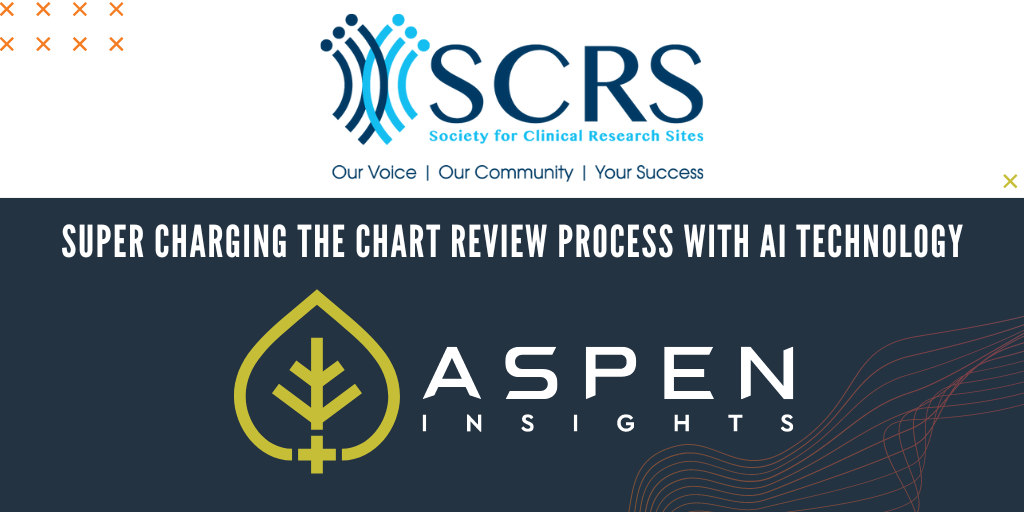As most clinical research sites well know, patient recruitment remains one of the largest challenges in clinical research in 2022. A recent paper in National Institute for Health suggests that more than 85% of research studies fail to meet recruitment goals and up to 50% of sites are unable to recruit more than one patient for a given trial. Is it the increasingly restrictive trial criteria that is eliminating candidates, or is it simply too much for a recruitment coordinator to qualify vast populations of patients manually? Regardless of the why, enrollment is staggering – affecting sites, sponsors, and patients alike.
How can sites actively work to remove themselves from this statistic?
- Use a data-driven approach to project enrollment during feasibility analyses to make sure you are only taking on studies that fit your specific patient population.
- Replace manual candidate identification through chart review with artificial intelligence [AI] technology that prequalifies patients by comparing structured and unstructured patient clinical data to robust inclusion & exclusion [I/E] trial criteria.
- Streamline your recruitment workflow through EMR integrations that connect you to patient clinical data and CTMS integrations that seamlessly convert candidates to participants.
Aspen Insights recently completed a case study on the use of Aspen Forge, its AI patient-trial matching platform, to compare its enrollment effectiveness to that of traditional recruitment methods. This case study summary compares enrollment outcomes across three different recruitment methods for a pediatric infectious disease trial conducted by a site that is partnered with pediatric practices throughout the site’s surrounding community.
Artificial Intelligence Candidate Identification
Aspen Insights was contracted by a site to perform candidate identification for a pediatric infectious disease study. By performing a simple search integrated with the site’s EMR system, 45,000 potential candidates were identified through AI Candidate Identification technology. Of those, 1,894 candidates fit the study criteria by applying numerous temporal aspects to the search query. An estimated 862 hours of chart review time was saved by using unique machine learning and text interpretation software for this pediatric study alone.
Traditional Patient Referrals from Partner Practices
Due to the site’s relationships with pediatric practices, 76 patients were referred directly from the practices for study participation at the point of care. AI Candidate Identification randomized nearly 180% more patients when compared to Traditional Patient Referrals from Practice Partners.
External Patient Recruitment Campaigns
Using traditional patient recruitment campaigns, the site brought in 133 interested candidates, who still required validation as qualified candidates. However, using advanced artificial intelligence, the number of interested leads generated was double compared to the traditional recruitment method.

Overall, 56% of the site’s total number of interested candidates originated through candidate identification through EMR-integrated machine learning technology. This recruitment method accounted for 64% of the site’s randomized subjects, representing over 1.8 times the number generated through traditional recruitment methods combined.
The effectiveness of utilizing this type of technology is further illustrated through the site’s pediatric study outcomes:
- Provided the site 200 prequalified candidates ready for screening on Day 1 of the study opening to recruitment.
- The site’s average monthly enrollment was 3X more over all other participating sites.
- The site exceeded the enrollment goals set by the sponsor by 150%.
- The site saved upwards of $25,000 in one month on study nurse salaries with the use of AI patient identification instead of manually reviewing 45,000 patient records.
- 12 competing sites randomized less than 5 patients.
- 15 competing sites failed to randomize a single patient.
It is evident that the solution to today’s recruitment challenges is the adoption of advanced technologies for the purpose of more easily identifying quality candidates to pursue for research. Although this market is still being shaped and influenced, it’s clear that sites that continue to rely only on traditional methods for recruitment may be leaving potential trial participants behind.
Originally submitted for publication: https://myscrs.org/resources/supercharging-the-chart-review-process-with-ai-technology/
